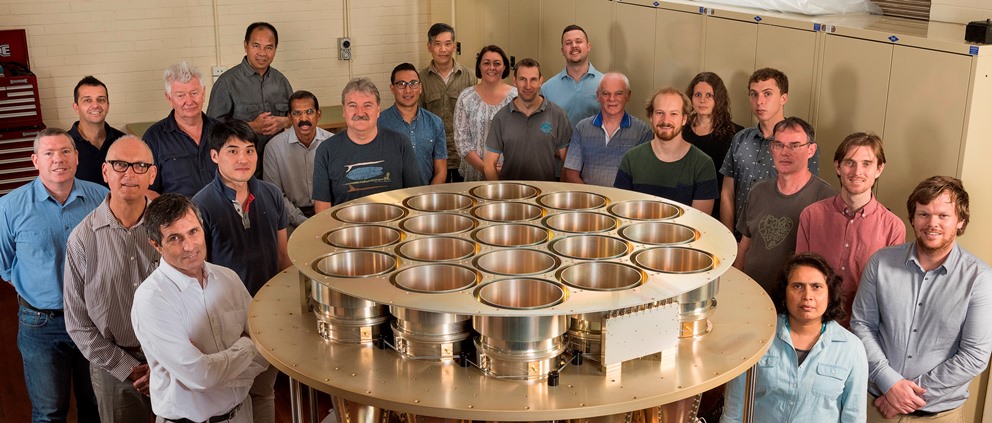The Space and Astronomy Antenna and Receiver Technologies Group
Space and Astronomy (formerly CSIRO Astronomy and Space Science) has long been acknowledged as a world-leader in pioneering low-noise, high performance antenna systems and receivers. The group has designed and fabricated systems in use in the ATNF telescopes, as well as other telescopes and antenna systems around the world.

Key capabilities are:
- Cryogenic receivers
- Phased array feeds
- Electromagnetic analysis
- Device characterization
- Cryogenic noise and S parameters
- Balanced LNA (noise parameters and S parameters)
- Feeds and PAFs
- Antenna measurements
- Microelectronic assembly
- Wire bonding
- On-wafer testing
- Mechanical design & analysis
- Cryogenic
- Large structures
- Composites
- Solid system design: manufacturable, operable and maintainable as well as high performance
Current major projects include:
- Multibeam receiver for FAST
NAOC approached CASS to design and manufacture the landmark L-band receiver for its Five hundred metre Aperture Spherical Telescope (FAST), based on the success of similar receivers we have built for Parkes and the Arecibo telescopes.
- Ultra wideband receiver at Parkes
Planned to begin operation for observations starting in May 2018, the motivations for this new UWB receiver are to match state of the art signal processing and data capture capabilities,
reduce the operational load of manual receiver changes and provide continuous coverage of the band: 0.7 - 4.2 GHz (6:1).
- Phased Array Feeds (PAF) The development of PAFs has been driven primarily by the science goals of ASKAP and the SKA to rapidly survey large areas of sky.